Daniel Walber, new contributor, with the first episode of a weekly feature on production design. Every Monday morning we'll take a look at memorable sets and props, from classic Oscar nominees to the best new releases.

The Exorcist is a movie about a single room. Sure, it starts halfway across the world, on an archaeological dig in Northern Iraq. It’s true that Father Damien has a memorable, upsetting trip to a mental hospital in New York. And those iconic steps lurk just outside the house. Yet all of the violence, all of the vomit, all of Mercedes McCambridge’s legendary profanity issues forth from little Regan MacNeil’s tiny bedroom...
Oscar-nominated production design team Bill Malley (Mommie Dearest) and Jerry Wunderlich (Ordinary People) certainly rose to the challenge. The bed, in particular, is a triumph. Its first appearance comes before the madness, on a calm and quit evening. Her Virgin Mary-blue sheets and her warm quilt wrap her in safety. The bed itself, with its gorgeous wood, is a subtle reminder of the financial stability that comes from having a famous actress as a mom. And, on the whole, Ellen Burstyn’s Chris MacNeil seems to have been a perfectly loving parent.

Soon, however, the set turns on them. The bed strikes first. Chris puts Regan to bed after her unnerving appearance downstairs. Yet neither gets any time to recover, as suddenly the bed begins to violently shake. Its nurturing colors are the same, but that can no longer hide the fact that something has gone horribly wrong.
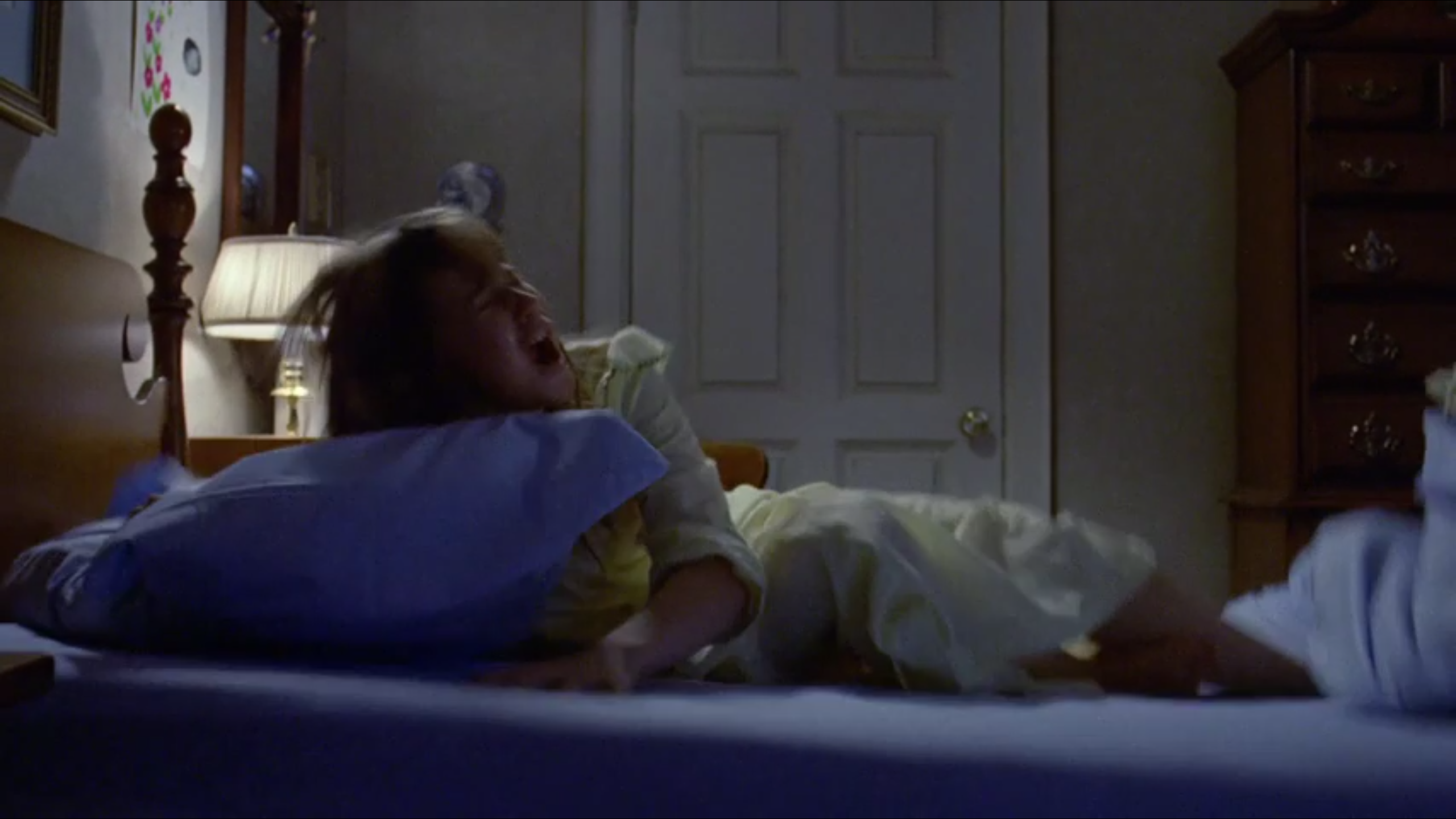
A few scenes later, the high chest of drawers goes rogue as well. As ornate and reassuring a presence in the room as the bed, it is now just another instrument of evil. After the colorful armchair blocks Chris’s way out of the room, the chest rushes at her with a speed and vigor unheard of in the world of colonial revival furniture.


By the arrival of Father Damien, everything has changed. The dresser and armchair have been removed. The only thing left is the bed, from which Regan/Pazuzu will wreak havoc. For her protection, she’s been tied down. The bed itself has been wrapped with cushions and cloth.
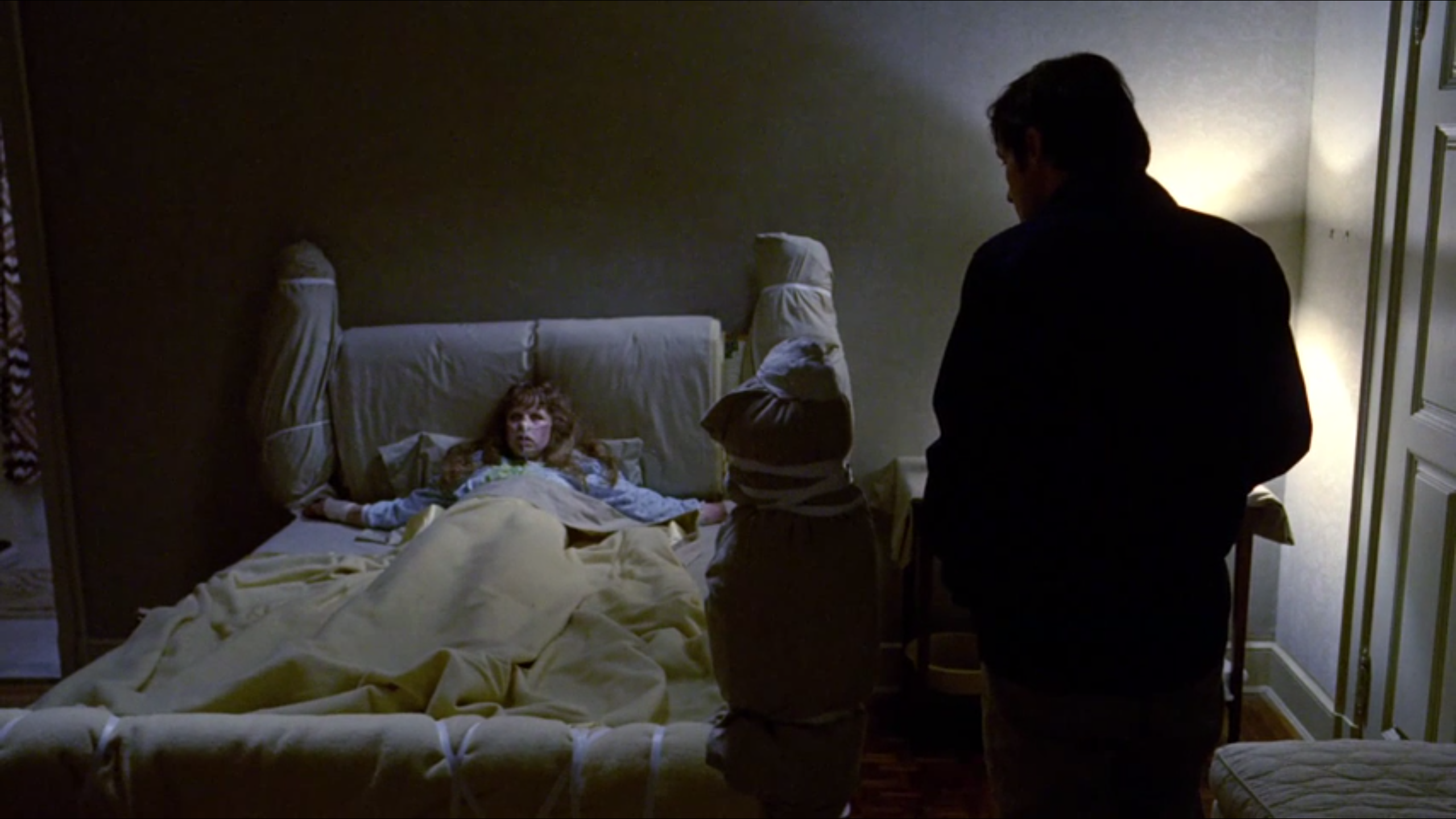
It bears no more resemblance to ordinary furniture. It’s like if a hideous futon were exposed to nuclear radiation, bulging in all of the wrong places. At Father Damien’s second visit, the binding appears to have somehow expanded, as if it were feeding off of the malevolent energy throbbing within.
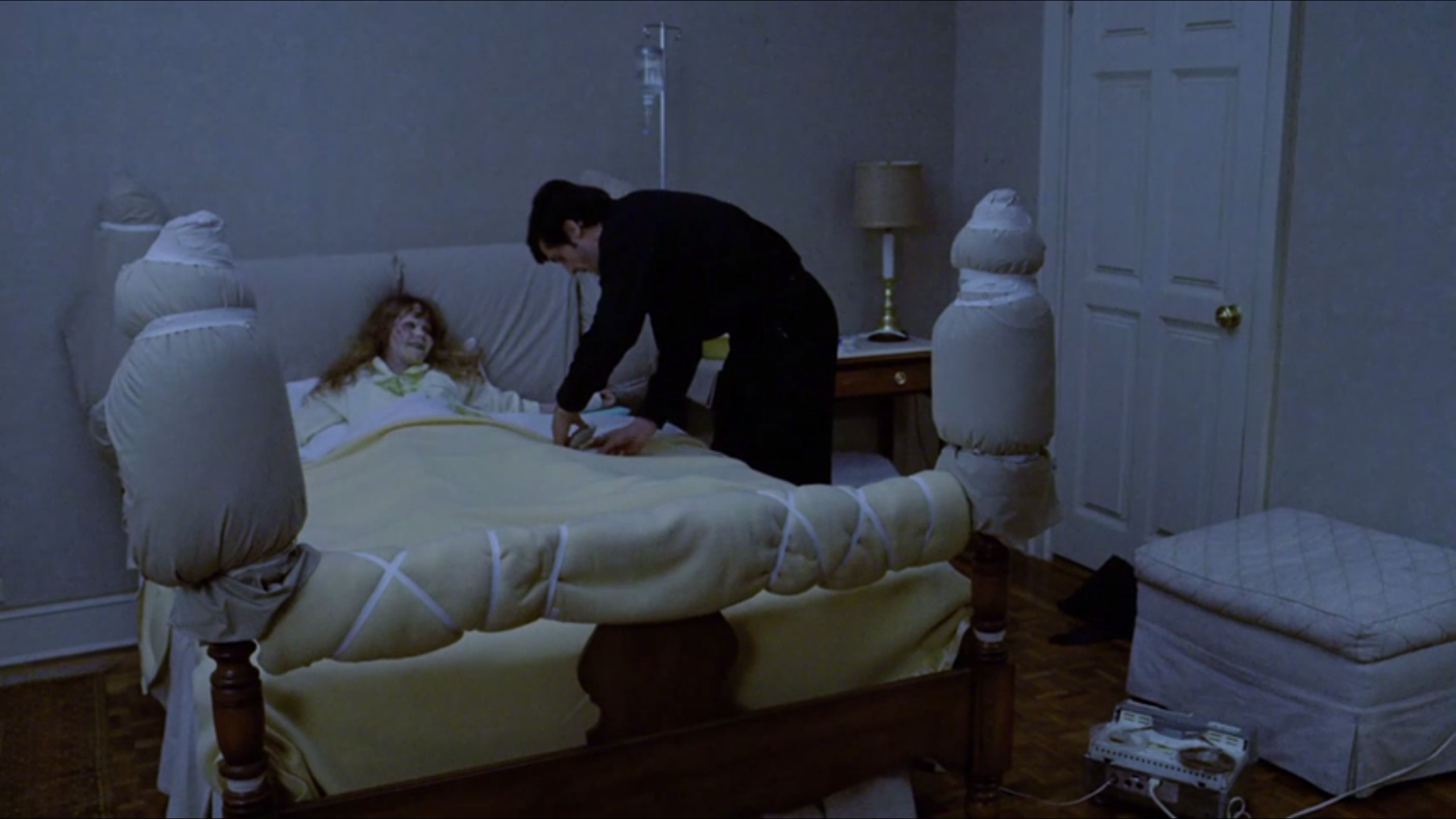
The bed looks diseased. It mimics the multitude of damned souls collecting in Regan’s body, bursting at the seams. The cushions behind her, meanwhile, sometimes frame her as if she we were already in a coffin.
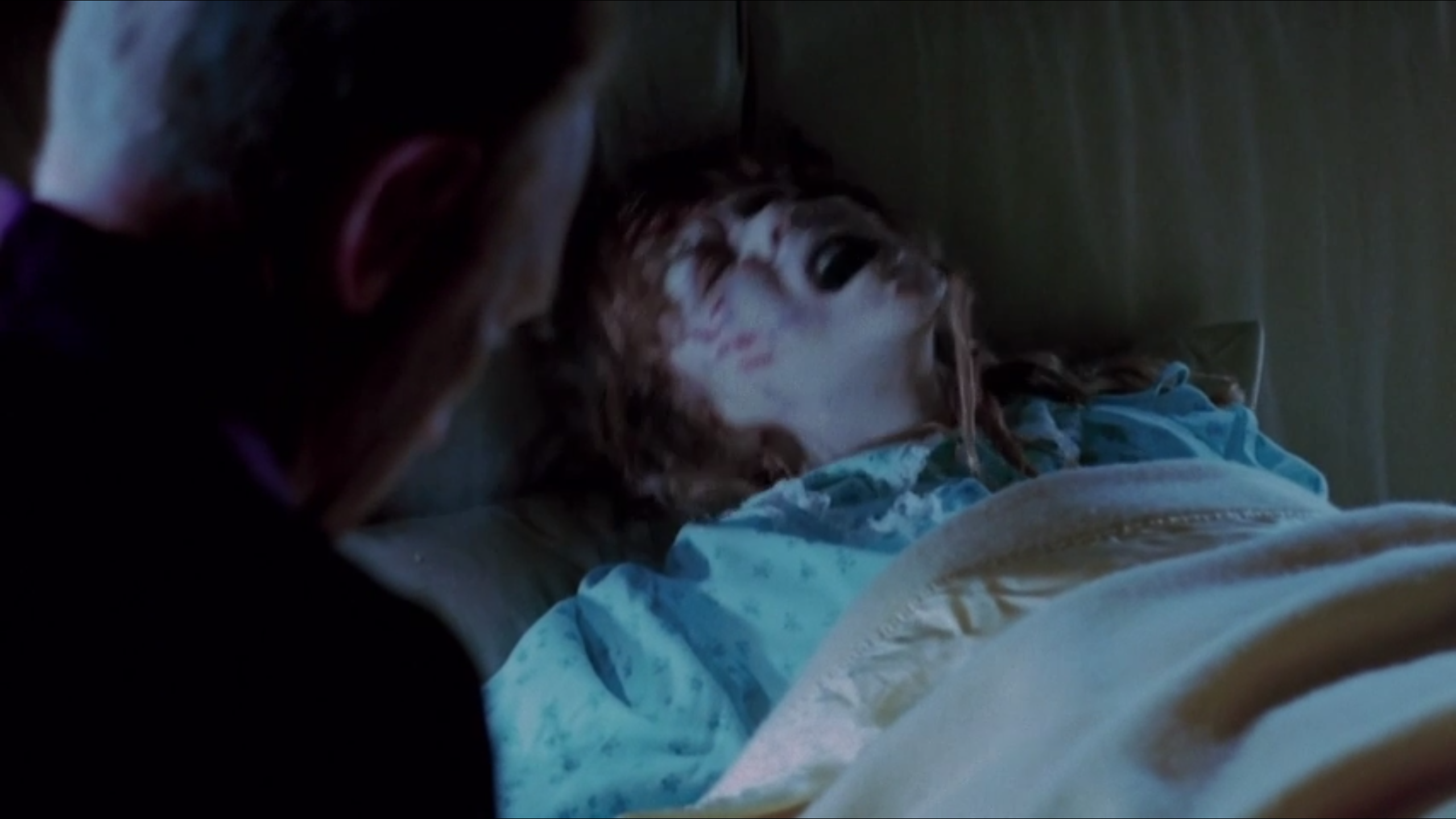
The monstrous bedposts give a bizarre geometric order to the shots, particularly when they frame Father Damien, cowering near the floor.
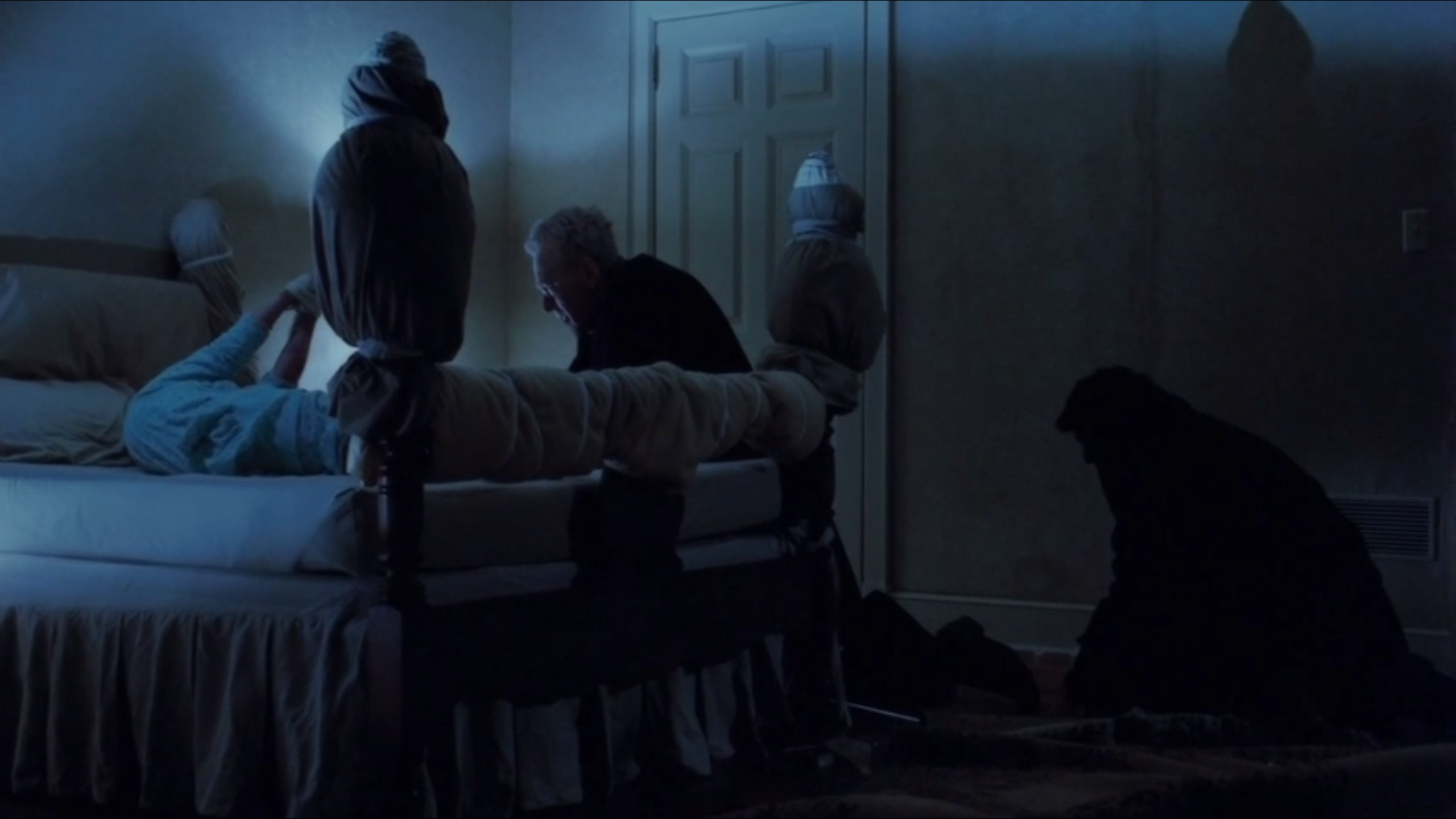
In other shots they create uncanny shadows, projecting their form onto the walls. Stare into the still below long enough and you can see any number of things – the wing of an enormous bat, perhaps?
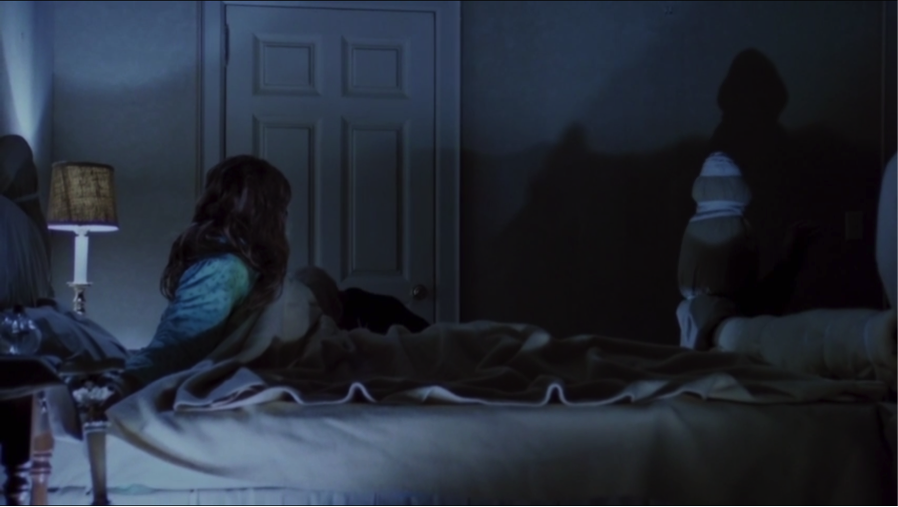
Finally, in one of the film’s most celebrated shots, one of these bulbous pillars takes on the proud height of a temple column. It evokes the enormous Iraqi ruins that begin the film, connecting this urban possession with the ancient demonic force that caused it. Sure, what we remember is the rapturous form of Regan as she receives the statue of Pazuzu. But the framing, the towering presence of the bed-turned-monument, is just as essential to this triumph of blasphemous corruption.
